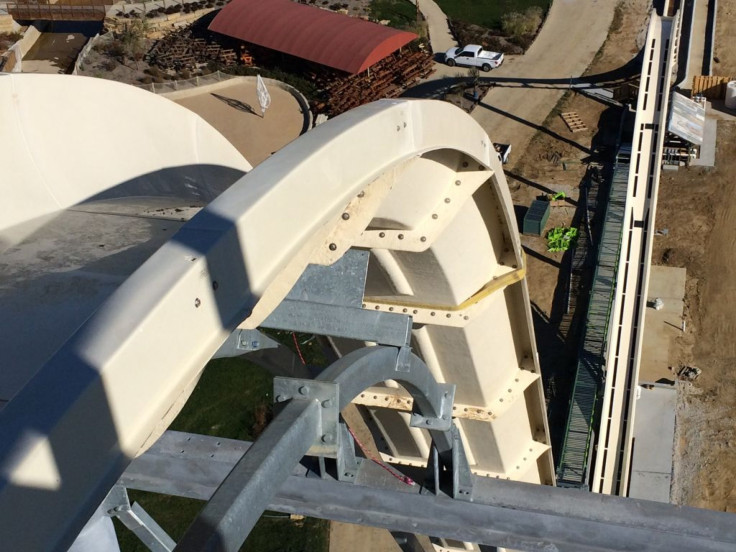New Tallest Waterslide Verruckt, Loop-De-Loops, and Physics: The Science Of Splashy Rides

A Kansas City amusement park is set to unveil the tallest waterslide ever built next year. Schlitterbahn Kansas City Waterpark won’t say how tall the forthcoming Verruckt (German for “insane”) Meg-A-Blaster is, but the company does say it will handily loom above the current tallest waterslide, a Brazilian construction that stands at 134.5 feet and sends visitors zooming down at more than 65 miles per hour. Naturally, the question that you may be asking is: how on Earth can that thing be safe?
Waterslides, of course, do not have seat belts like roller coasters, nor machinery or brakes. It’s all just water and physics.
"Water acts as a lubricant between you and the slide," Eric Martell, a physicist at Millikin University in Decatur, Ill., told National Geographic earlier this year. "But it also pushes you along like a river. And everything that happens to you on a waterslide, it's because of the forces of gravity and friction and the force coming from the interactions between the water and the slide."
Straight shots on a slide are mostly a matter of gravity and friction, but when you throw curves into the mix, another physical force comes into play in a big way: inertia. Inertia is a fundamental laziness at the heart of the universe: physical objects naturally resist changes in their movement, including being forced to change directions or their velocity. Your body wants to go in a straight line, so if a waterslide curved without a sidewall, you’d shoot straight off the bend.
"That's why the waterslide has curved sides," Martell told National Geographic. "Your inertia is trying to take you through the waterslide and out. But instead, you go up the sides of the slides. That's one of the things that has to be figured in—how people of all body types go up the slides."
Engineers have to do a lot of puzzling over calculations to ensure that everyone that gets on the slide – slim or chubby, short or tall – gets to the end of the ride in one piece. Not only can designers vary the height and curvature of a slide’s walls (or completely enclose them in tubes), they may also vary the depth of the water running through certain parts of the slide.
"More water is a very good thing if you're trying to regulate different-size riders,” Rick Hunter, president and CEO of waterslide design company ProSlide Technology told National Geographic. A heavier person “can't break through the deep water. But a lighter rider—that person will get flushed and get swept up by the water and they'll eventually reach the speed of the water."
Trickier constructions, like loop-de-loops, require even more careful planning. New Jersey-based Action Park once hosted a waterslide called the Cannonball Loop, but riders frequently failed to make it all the way around the loop and had to clamber out an escape hatch. The Cannonball Loop was supposedly only open for a month in the summer of 1985.
But other parks have succeeded where Action Park failed. The Noah’s Ark Water Park in Wisconsin houses the Scorpion’s Tail, which has a loop-de-loop. But unlike the Cannonball Loop, which stood straight perpendicular to the ground, the loop in the Scorpion’s Tail is tilted, making it easier for riders to complete the circuit – and less likely that they’ll drop from the ceiling of the slide and crash onto the floor, according to Popular Science.
© Copyright IBTimes 2024. All rights reserved.





















